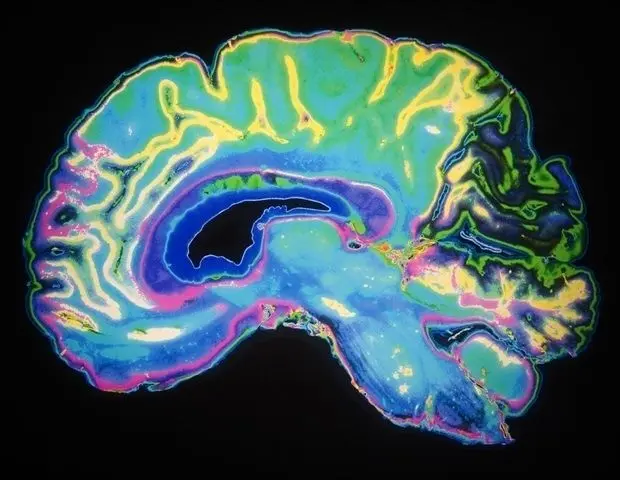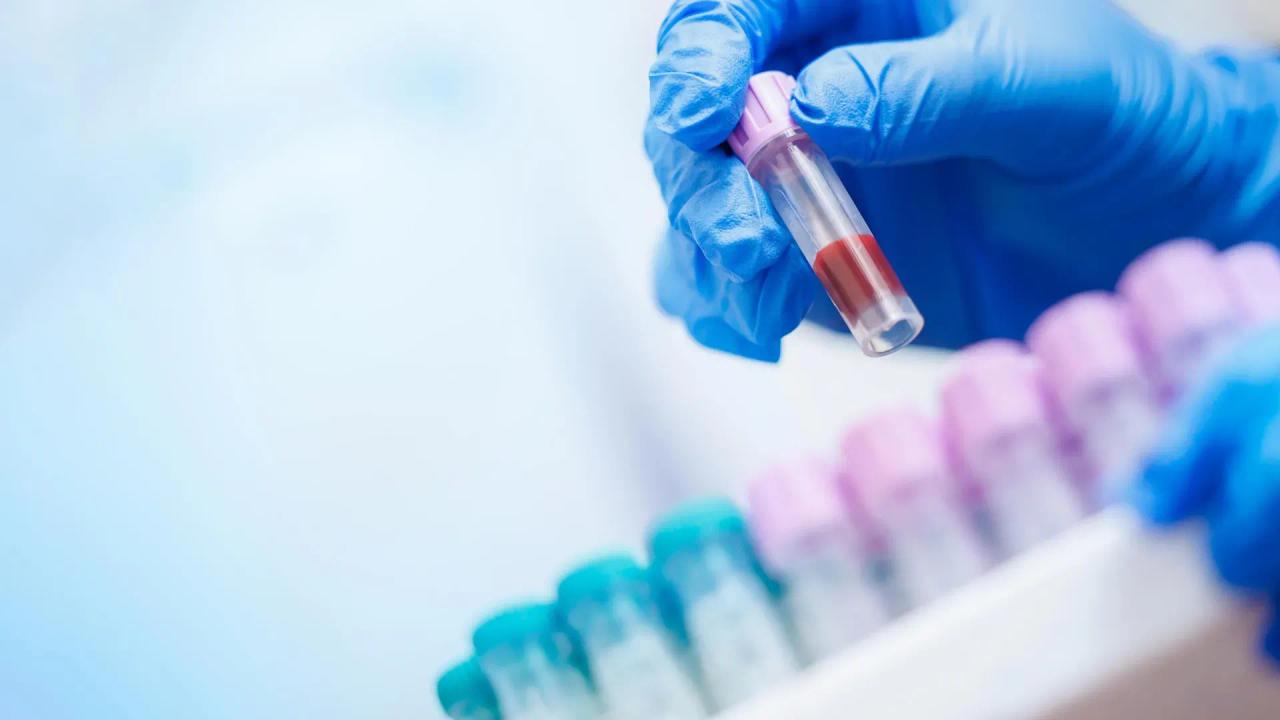AI-Powered Tool Revolutionizes Traumatic Brain Injury Investigations in Forensics
2 Sources
2 Sources
[1]
New AI-powered tool could enhance traumatic brain injury investigations in forensics and law enforcement
A team of researchers from the University of Oxford, in collaboration with Thames Valley Police, the National Crime Agency, the John Radcliffe Hospital, Lurtis Ltd. and Cardiff University, has developed an advanced physics-based AI-driven tool to aid the forensic investigation of traumatic brain injuries (TBI). The study, published today (26 Feb) in Communications Engineering, introduces a mechanics-informed machine learning framework to help police and forensic teams accurately predict TBI outcomes based on documented assault scenarios. TBI is a critical public health issue, with severe and long-term neurological consequences. In forensic investigations, determining whether an impact could have caused a reported injury is crucial for legal proceedings, yet there is currently no standardised, quantifiable approach to do this. The new study demonstrates how machine learning tools informed by mechanistic simulations could provide evidence-based injury predictions, to improve the accuracy and consistency of TBI investigations. Lead researcher Antoine Jérusalem, Professor of Mechanical Engineering in the Department of Engineering Science at the University of Oxford said: 'This research represents a significant step forward in forensic biomechanics. By leveraging AI and physics-based simulations, we can provide law enforcement with an unprecedented tool to assess TBIs objectively.' The study's AI framework, trained on real, anonymised police reports and forensic data, achieved remarkable prediction accuracy for TBI-related injuries: In each case, the model showed high specificity and high sensitivity (a low rate of false positive and false negative results). The framework uses a general computational mechanistic model of the head and neck, designed to simulate how different types of impacts -- such as punches, slaps, or strikes against a flat surface -- affect various regions. This provides a basic prediction of whether an impact is likely to cause tissue deformation or stress. However, it does not predict on its own any risk of injury. This is done by an upper AI layer which incorporates this information with any additional relevant metadata, such as the victim's age and height, before providing a prediction for a given injury. The researchers trained the overall framework on 53 anonymised real police reports of assault cases. Each report included information about a range of factors which could affect the blow's severity (e.g., age, sex, body build of the victim/offender). This resulted in a model capable of integrating mechanical biophysical data with forensic details to predict the likelihood of different injuries occurring. When the researchers assessed which factors had the most influence on the predictive value for each type of injury, the results were remarkably consistent with medical findings. For instance, when predicting the likelihood of skull fracture, the most important factor was the highest amount of stress experienced by the scalp and skull during an impact. Similarly, the strongest predictor of loss of consciousness was the stress metrics for the brainstem. The research team insists that the model is not intended to replace the involvement of human forensic and clinical experts in investigating assault cases. Rather, the intention is to provide an objective estimate of the probability that a documented assault was the true cause of a reported injury. The model could also be used as a tool to identify high-risk situations, improve risk assessments, and develop preventive strategies to reduce the occurrence and severity of head injuries. Professor Jérusalem added: 'Our framework will never be able to identify without doubt the culprit who caused an injury. All it can do is tell you whether the information provided to it is correlated with a certain outcome. Since the quality of the output depends on the quality of the information fed into the model, having detailed witness statements is still crucial.' Ms Sonya Baylis, Senior Manager at the National Crime Agency who supported this research project, said: 'Understanding brain injuries using innovative technology to support a police investigation, previously reliant on limited information, will greatly enhance the interpretation required from a medical perspective to support prosecutions.' Dr Michael Jones, Researcher at Cardiff University, and Forensics Consultant, said: 'An "Achilles heel" of forensic medicine is the assessment of whether a witnessed or inferred mechanism of injury, often the force, matches the observed injuries. With the application of machine learning, each additional case contributes to the overall understanding of the association between the mechanism of cause, primary injury, pathophysiology and outcome.' The study was conducted by an interdisciplinary team of engineers, forensic specialists, and medical professionals from the University of Oxford, Thames Valley Police, the National Crime Agency, Cardiff University, Lurtis Ltd., the John Radcliffe Hospital and other partner institutions.
[2]
New AI-powered tool could enhance traumatic brain injury investigations in forensics and law enforcement
A team of researchers from the University of Oxford, in collaboration with Thames Valley Police, the National Crime Agency, the John Radcliffe Hospital, Lurtis Ltd. and Cardiff University, has developed an advanced physics-based AI-driven tool to aid the forensic investigation of traumatic brain injuries (TBI). The study, published in Communications Engineering, introduces a mechanics-informed machine learning framework to help police and forensic teams accurately predict TBI outcomes based on documented assault scenarios. TBI is a critical public health issue, with severe and long-term neurological consequences. In forensic investigations, determining whether an impact could have caused a reported injury is crucial for legal proceedings, yet there is currently no standardized, quantifiable approach to doing this. The new study demonstrates how machine learning tools informed by mechanistic simulations could provide evidence-based injury predictions, to improve the accuracy and consistency of TBI investigations. Lead researcher Antoine Jérusalem, Professor of Mechanical Engineering in the Department of Engineering Science at the University of Oxford, said, "This research represents a significant step forward in forensic biomechanics. By leveraging AI and physics-based simulations, we can provide law enforcement with an unprecedented tool to assess TBIs objectively." The study's AI framework, trained on real, anonymized police reports and forensic data, achieved remarkable prediction accuracy for TBI-related injuries: In each case, the model showed high specificity and high sensitivity (a low rate of false positive and false negative results). The framework uses a general computational mechanistic model of the head and neck, designed to simulate how different types of impacts -- such as punches, slaps, or strikes against a flat surface -- affect various regions. This provides a basic prediction of whether an impact is likely to cause tissue deformation or stress. However, it does not predict on its own any risk of injury. This is done by an upper AI layer which incorporates this information with any additional relevant metadata, such as the victim's age and height, before providing a prediction for a given injury. The researchers trained the overall framework on 53 anonymized real police reports of assault cases. Each report included information about a range of factors which could affect the blow's severity (e.g., age, sex, body build of the victim/offender). This resulted in a model capable of integrating mechanical biophysical data with forensic details to predict the likelihood of different injuries occurring. When the researchers assessed which factors had the most influence on the predictive value for each type of injury, the results were remarkably consistent with medical findings. For instance, when predicting the likelihood of skull fracture, the most important factor was the highest amount of stress experienced by the scalp and skull during an impact. Similarly, the strongest predictor of loss of consciousness was the stress metrics for the brainstem. The research team insists that the model is not intended to replace the involvement of human forensic and clinical experts in investigating assault cases. Rather, the intention is to provide an objective estimate of the probability that a documented assault was the true cause of a reported injury. The model could also be used as a tool to identify high-risk situations, improve risk assessments, and develop preventive strategies to reduce the occurrence and severity of head injuries. Professor Jérusalem added, "Our framework will never be able to identify without doubt the culprit who caused an injury. All it can do is tell you whether the information provided to it is correlated with a certain outcome. Since the quality of the output depends on the quality of the information fed into the model, having detailed witness statements is still crucial." Ms. Sonya Baylis, Senior Manager at the National Crime Agency who supported this research project, said, "Understanding brain injuries using innovative technology to support a police investigation, previously reliant on limited information, will greatly enhance the interpretation required from a medical perspective to support prosecutions." Dr. Michael Jones, Researcher at Cardiff University, and Forensics Consultant, said, "An 'Achilles heel' of forensic medicine is the assessment of whether a witnessed or inferred mechanism of injury, often the force, matches the observed injuries. "With the application of machine learning, each additional case contributes to the overall understanding of the association between the mechanism of cause, primary injury, pathophysiology and outcome." The study was conducted by an interdisciplinary team of engineers, forensic specialists, and medical professionals from the University of Oxford, Thames Valley Police, the National Crime Agency, Cardiff University, Lurtis Ltd., the John Radcliffe Hospital and other partner institutions.
Share
Share
Copy Link
Researchers from the University of Oxford and partners have developed an advanced AI-driven tool to enhance forensic investigations of traumatic brain injuries, potentially improving accuracy in legal proceedings.

Innovative AI Tool for Traumatic Brain Injury Investigations
Researchers from the University of Oxford, in collaboration with various institutions including Thames Valley Police and the National Crime Agency, have developed a groundbreaking AI-powered tool to enhance forensic investigations of traumatic brain injuries (TBI). The study, published in Communications Engineering, introduces a mechanics-informed machine learning framework that could significantly improve the accuracy and consistency of TBI investigations in legal proceedings
1
2
.The Need for Advanced TBI Assessment
Traumatic brain injury is a critical public health issue with severe long-term neurological consequences. In forensic investigations, determining whether an impact could have caused a reported injury is crucial for legal proceedings. However, there has been no standardized, quantifiable approach to make this assessment until now
1
2
.AI Framework and Mechanistic Simulations
The newly developed AI framework combines physics-based simulations with machine learning to provide evidence-based injury predictions. The system utilizes a general computational mechanistic model of the head and neck to simulate various types of impacts, such as punches, slaps, or strikes against flat surfaces
1
2
.Key features of the AI tool include:
- High specificity and sensitivity in predicting TBI-related injuries
- Integration of mechanical biophysical data with forensic details
- Ability to predict the likelihood of different injuries occurring
Training and Validation
The researchers trained the framework on 53 anonymized real police reports of assault cases. These reports included a range of factors that could affect the severity of a blow, such as age, sex, and body build of both the victim and the offender
1
2
.Consistent Results with Medical Findings
When assessing the factors with the most influence on predictive value for each type of injury, the results aligned remarkably well with medical findings:
- For skull fracture prediction, the highest amount of stress experienced by the scalp and skull during impact was the most important factor
- For loss of consciousness prediction, stress metrics for the brainstem were the strongest predictor
1
2
Related Stories
Implications for Forensics and Law Enforcement
The AI tool is not intended to replace human forensic and clinical experts but rather to provide an objective estimate of the probability that a documented assault caused a reported injury. It could also be used to identify high-risk situations, improve risk assessments, and develop preventive strategies
1
2
.Professor Antoine Jérusalem, the lead researcher, emphasized that the framework cannot identify culprits with certainty but can determine correlations between provided information and certain outcomes
1
2
.Support from Law Enforcement and Medical Professionals
Ms. Sonya Baylis from the National Crime Agency stated that this innovative technology would greatly enhance the interpretation of brain injuries from a medical perspective to support prosecutions
1
2
.Dr. Michael Jones, a researcher at Cardiff University and Forensics Consultant, highlighted how the application of machine learning could contribute to a better understanding of the association between injury mechanisms, primary injuries, pathophysiology, and outcomes
1
2
.This interdisciplinary research project brings together experts from various fields, including engineering, forensics, and medicine, potentially marking a significant advancement in the field of forensic biomechanics and its applications in law enforcement and legal proceedings.
References
Summarized by
Navi
[1]
Related Stories
Recent Highlights
1
Google launches Gemini 3 Flash as default AI model, delivering speed with Pro-grade reasoning
Technology

2
OpenAI launches GPT Image 1.5 as AI image generator war with Google intensifies
Technology

3
OpenAI launches ChatGPT app store, opening doors for third-party developers to build AI-powered apps
Technology








